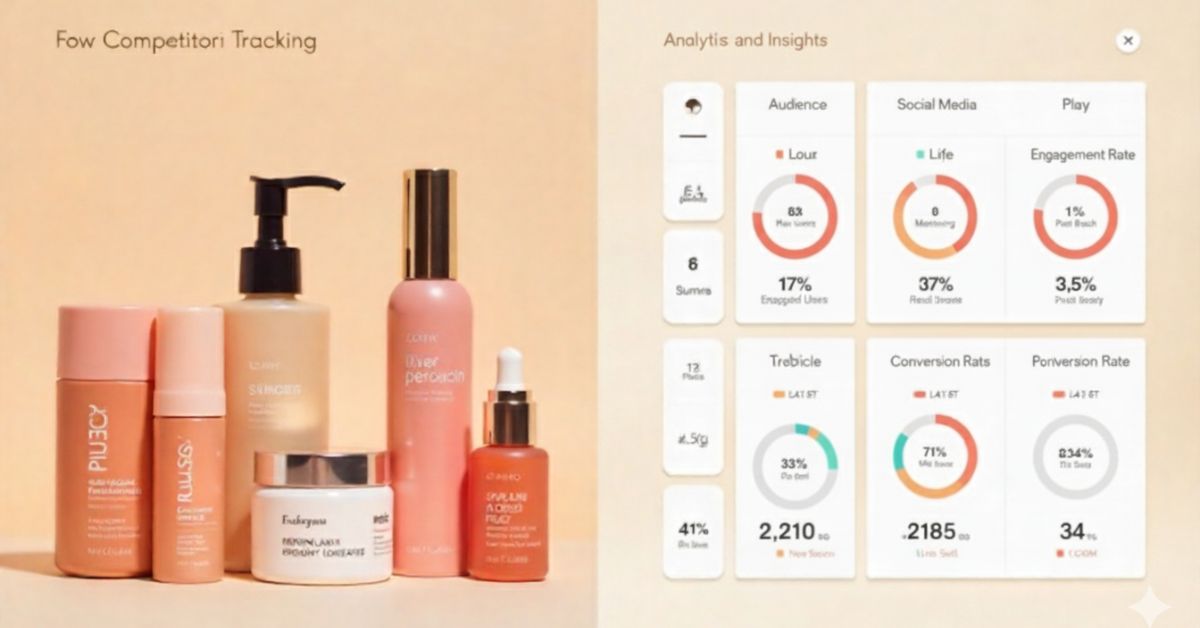
Data matters in beauty. Smart brands track what competitors post, price, and promote. If you want better product positioning or faster response to promos, URL level tracking is essential.
What Is Competitor URL Tracking in the Beauty Industry?
Competitor URL tracking means watching specific product pages and listings on competitor sites. You track price, discounts, stock, descriptions, and new launches. This gives you raw, page-level signals you can use every day.
What does a typical tracker capture?
- Price changes and discount tags.
- Stock status (in/out of stock).
- Product description, tags, and SEO copy.
- New product launches and frequent updates. These are exactly the kinds of fields tracked by specialist tools.
Why Do Beauty Brands Need Competitor Tracking Tools?
Because the market moves fast, E-commerce and direct-to-consumer growth mean small promo changes can steal traffic overnight. Tracking competitor pages tells you what customers see and how competitors respond.
What bigger trends make this urgent?
- Personalised experiences and AI-driven product discovery are shifting buyer expectations. Brands that monitor competitor activity can copy winning offers and avoid costly mistakes.
- Social commerce and new retail channels mean products can spike in demand quickly. If a rival runs a flash sale on TikTok Shop, you want to know fast.
How Does Competitor Tracking Help Improve Marketing Campaigns?
It gives clear inputs you can act on. Don’t guess — use page signals.
Practical ways it helps
- Price and promo defense: match or counter price moves.
- Creative & messaging ideas: copy successful descriptions and missing claims.
- Stock and availability planning: pre-empt out-of-stock issues.
- SEO and paid search playbook: find keywords and landing pages that competitors push. Tools that combine URL tracking with traffic and keyword insights make this repeatable and measurable.
What Are the Key Metrics Beauty Marketers Should Monitor?
Track the metrics that map to revenue and visibility.
Core metrics to watch
- Price & discount changes — how often and how deep.
- Availability/stock — out-of-stock hits conversion fast.
- Page traffic & referral patterns — where their visitors come from.
- Conversion & category conversion rates — compare your page vs theirs.
- Share of voice/listing prominence — who shows up first for key products.
- Sentiment or review shifts — sudden negative reviews can create openings. Conversion benchmarks and channel-level rates matter for context. Use them to prioritise which competitor signals to act on.
Also read: Beauty Product Data Feeds: Pricing, Trends & Market Intelligence
How Can BeautyFeeds.io Help You Stay Ahead of Competitors?
Beauty Feeds offers URL-level tracking built for cosmetics and personal care. It watches pricing, discounts, stock, descriptions, and new launches — and delivers those signals in real time so you can act. That makes competitor moves visible and actionable.
Ways to use BeautyFeeds outputs today
- Feed price-change alerts into paid-search and dynamic pricing rules.
- Pull product copy changes into creative briefs.
- Combine product datasets with your own sales data to model promo lift. (See the Sample datasets for quick test files.)
What’s Next for Data-Driven Growth in Beauty Marketing?
Expect tighter links between product data, creative, and buying signals.
- AI will make product recommendations smarter. Brands that feed clean competitor data into models will get better results.
- Social and marketplace spikes will keep happening. Fast, URL-level signals let you respond in hours — not weeks.
Final Thoughts
Want real, page-level data you can act on? Start with competitor URLs that matter to your line. Then feed those signals to your ads, merchandising, and content teams. BeautyFeeds makes that practical.
Discover how BeautyFeeds.io helps beauty brands grow smarter—visit Beauty Feeds Competitor URL Tracking today.